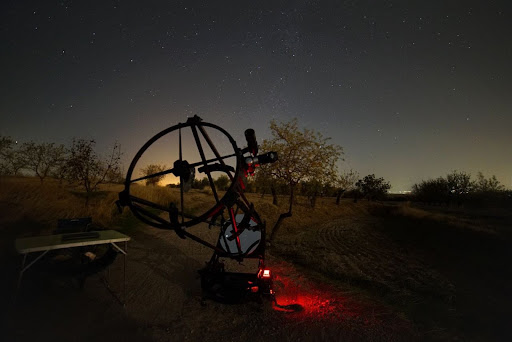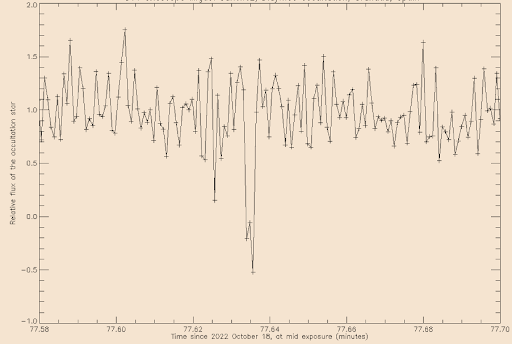The observation of stellar occultations is a powerful technique for studying the physical and dynamic properties of asteroids, and the availability of the ESA Gaia mission catalogues greatly enhances its effectiveness. However, near-earth asteroids (NEAs) still represent a challenge because they move quickly and are small, which produces shorter events and much narrower shadows cast on the ground. To reach near-earth objects using this technique, the ESA Discovery programme supported a project called Asteroid Collaborative Research via Occultation Systematic Survey (ACROSS), directed by Paolo Tanga, astronomer at the Côte d’Azur Observatory, Lagrange Laboratory (Côte d’Azur University-OCA-CNRS). ACROSS was selected as part of a call for projects on the Agency’s open space innovation platform, which is looking for innovative space research to support.
The ACROSS project is particularly interested in Didymos – a binary asteroid system, in which a small moon of 150 meters in diameter called Dimorphos – the target of NASA’s double asteroid redirection test, the DART mission is orbiting the main asteroid of 780 meters in diameter.
After extended efforts to improve the orbit of Didymos and disseminate the predictions (in order to involve a large community of observers, including amateurs and professionals), the first success of capturing Didymos occultation was recorded on October 15 in the United States, followed by observations in Spain and Japan.

A 50 cm portable telescope located in the countryside near Granada, Spain, by the team led by J.L. Ortiz of the Instituto de Astrofisica de Andalucia-CSIC.

Prof. Kleomenis Tsiganis
ACROSS Co-investigator Prof. Kleomenis Tsiganis of Aristotle University of Thessaloniki, AUTh, NEO-MAPP Chair of the Steering Committee, told ESA: “To make such campaigns possible, we needed to perform independent orbit improvement calculations from the currently available data, shrink the uncertainty of the occultation path to a few kilometers, and deploy observers accordingly to catch a momentary blinking out of the star that has to be measured in milliseconds.”
With Didymos’ eclipsing of the stars behind it caught for the first time by astronomers, future events will be easier to study. By observing a more significant number of them, it will be possible to ensure much more precise monitoring of the orbit of Didymos, which may allow the detection of a tiny change in the heliocentric orbit of Didymos due to the impact of the DART.
Occultation light curve obtained in Spain by the team of J.L. Ortiz (Institute of Astronomy of Granada) on October 18th.

Occultation light curve obtained in Spain by the team of J.L. Ortiz (Institute of Astronomy of Granada) on October 18th.
ACROSS
Paolo Tanga, astronomer, project coordinator, Lagrange laboratory (Côte d’Azur University-OCA-CNRS) – Kleomenis Tsiganis (partner coordinator, Aristotle University of Thessaloniki) – Damya Souami, post-doc ACROSS, Lagrange laboratory (Côte d’Azur University-OCA-CNRS) – Joao Ferreira, post-doc, Aristotle University of Thessaloniki – Alex Siakas, student, Aristotle University of Thessaloniki.
Paolo Tanga, K. Tsiganis, and D. Souami are also DART IT investigation team members.
ACROSS is supported by the ESA contract 2-1775/21/NL/GL/ov.
Learn more:
Les occultations stellaires franchissent une nouvelle étape avec l’asteroide Didymos (Laboratoire Lagrange)
Shadow hunters capture Didymos asteroid eclipsing stars (ESA)
This article was greatly inspired by the Lagrange Laboratory blog post
